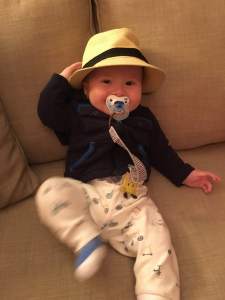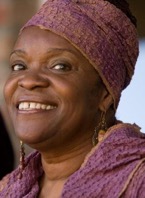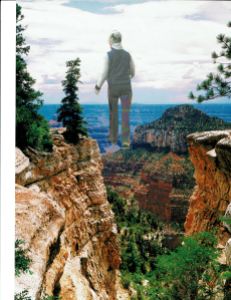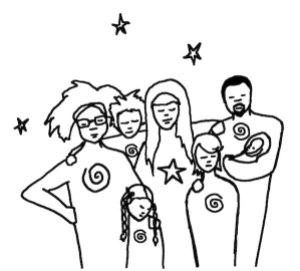This blog started as a letter that took an unexpected turn. This is now the first in a blog series about my journey to a vision realized: the building of effective and sustainable partnerships across our human diversity right in the middle of this time of global divisions. In this first blog of the series, I’m starting with my own journey from a spark of vision that stopped me in my tracks…and hasn’t dimmed for the intervening 36 years.
 When I was around 30 I attended what I thought was a simple weekend workshop sponsored by my church. By the I returned home, I’d caught sight of a vision that has illumined my path ever since. I saw myself, and you, as one part of our global family. I saw how the flow of money in my own life and in my nation’s commerce affects that global family. Given that, I understood that I had a responsibility to participate in money’s movement in a way that was in alignment with my love and respect for (global) family values and this earth, our fragile island home. I saw how our global family and the flow of money are intimately woven into my faith. For me, life itself is a Spirit walk.
When I was around 30 I attended what I thought was a simple weekend workshop sponsored by my church. By the I returned home, I’d caught sight of a vision that has illumined my path ever since. I saw myself, and you, as one part of our global family. I saw how the flow of money in my own life and in my nation’s commerce affects that global family. Given that, I understood that I had a responsibility to participate in money’s movement in a way that was in alignment with my love and respect for (global) family values and this earth, our fragile island home. I saw how our global family and the flow of money are intimately woven into my faith. For me, life itself is a Spirit walk.

The vision was clear. The life I longed to live, the world I longed to be part of, was clear. But was it possible? Here? Now? Could I release my fears and my hyper-sense of responsibility and step into this vision? Would I be able to find others also longing to live in the midst of such an audacious vision? Was this possible in the middle of the beauty and mess, the love and the injustice that I could see inside myself and in the world around me?
My quest was to find answers to these questions.
It has been both a rocky and beautiful journey. Again and again, I slipped back into old habits of not trusting myself and going silent when I needed to speak. Again and again, in groups and organizations with beautiful missions and vision, I was disappointed when difficult times were met with old patterns of traditional hierarchy or “best” (corporate) practices. I was afraid the beautiful vision both for myself and for community inside of organizations was impossible.
I was deep in this search in 2001 when my father died, and my half of my family’s financial inheritance flowed to me. Within 6 months of his death, I stepped into Be Present™ and Harvest Time (now called Wisdom & Money). In both organizations, I saw the alignment I was seeking in my own personal life embodied in an institution and a community that I hoped would support my vision of personal and cultural shift.
 Could what I experienced in these two organizations be built on a foundation strong enough to hold the commitment to love and justice even in the hard times?
Could what I experienced in these two organizations be built on a foundation strong enough to hold the commitment to love and justice even in the hard times?
I stayed to see for myself.
Mind you, from many perspectives, these organizations were very different. Be Present was founded by an African American woman gathering with other Black women and girls while holding a vision that included everyone. By the time I stepped in, this work held EVERYONE—across diversity in age, race, class, gender, gender-identity. For the first time in my life, I was in a community that looked like the world family I’d glimpsed at 30. Was it possible to build community across such vast diversity right in the middle of a world that was still divided? Could it hold when things got tough?
I stayed to see for myself.
Harvest Time/now called Wisdom & Money was founded by a white man who gathered together self-identified wealthy, and predominantly white, Christians. I stepped into this organization with a great deal of trust as Harvest Time was born out of the cross-class organization that hosted the retreat where I had my 30-year-old awakening vision. Harvest Time was formed to shift the focus of the ministry to people of wealth or from a culture of wealth.
I didn’t self-identify as wealthy until my father’s death and the subsequent inheritance. Since I’d had a powerful history with this organization, I immediately sought out Harvest Time to get the next level of support I needed to “engage with money as a doorway to spiritual transformation at the personal, communal and systemic levels.”** I knew that transformation of wealthy people like me was one part of a larger movement of economic justice that included everyone.
I stayed and watched and learned so much from both organizations.

Then a crisis hit at Harvest Time. The powerful vision remained, but the way forward was hard to see. I panicked, fearful that the powerful transformative work would be lost. I was afraid that yet another fabulous organization wouldn’t be able to stay within its beautiful vision in times of trouble.
But I’d glimpsed another possibility in my few years with Be Present. I knew there was a practice and support powerful enough to guide Harvest Time back into her own light. My mantra, that I repeated over and over again, was, “It doesn’t have to be this hard!”
Finally, Harvest Time reached out to Be Present, first as consultants and later as true partners. Be Present offered Harvest Time a missing practice—the Be Present Empowerment Model™. This model for personal and organizational effectiveness and sustainability helped Harvest Time/now Wisdom & Money navigate the crisis in a way that was in full integrity with the vision and mission. Instead of destroying, the crisis left us stronger.
Be Present found in Harvest Time/Wisdom & Money a partner organization audacious enough to dive right into the middle of wealth and faith and willing to stay in the journey with integrity.
My vision was not only possible, but I am now living right in the middle of it.
The collaboration between these two organization has grown step by step. Together we participated in a 9-year process of working collaboratively with a diverse group of organizations and individuals to give away a family farm in Mississippi. Two years ago, we held a joint Board of Directors meeting working in partnership to design and carry out the agenda. Following the board meeting, we held a Transformative Philanthropy Workshop using practices from both organizations.

The journey of partnership between these two organizations has required a simultaneous journey inward. The one thing I bring to each organization and the partnership between them is myself. It is clear that this realized vision also requires me to wake up to, then shift, the ways I have been participating in the very injustice and disrespect that I seek to shift in the culture around me. A glimpse into that process will be the topic of the second in this Vision Realized blog series.
*All of these illustrations are by Khara Scott-Bey, and all but the first one are from Big Topics at Midnight.
**From Wisdom & Money’s Mission statement.


 Cruising at 35,000 feet, my emotions began to settle. I wasn’t yet sure exactly how we would address this issue, but I was clear that moments like these were ripe with potential for transformation: personally, within our Wisdom & Money and Be Present partnership, and rippling out into our culture.
Cruising at 35,000 feet, my emotions began to settle. I wasn’t yet sure exactly how we would address this issue, but I was clear that moments like these were ripe with potential for transformation: personally, within our Wisdom & Money and Be Present partnership, and rippling out into our culture.
 One minute I’m holding my grandson, delighted by his giggles, and the next minute I find myself nauseated by the latest morsel of news. I love this country and delight in the daily pleasures and interactions of my life here. So much is beautiful. And yet, a dark and sinister shadow is also part of our national truth.
One minute I’m holding my grandson, delighted by his giggles, and the next minute I find myself nauseated by the latest morsel of news. I love this country and delight in the daily pleasures and interactions of my life here. So much is beautiful. And yet, a dark and sinister shadow is also part of our national truth.
 history and experiences. I was searching for the answers to the following questions: “How do I get to know the fullness of who I am? Not just someone’s best friend, caring mother or daughter of migrant farm workers. How do I thrive in this world and not just survive while living in a culture where people make assumptions about who I am based on my race, my gender, my class?
history and experiences. I was searching for the answers to the following questions: “How do I get to know the fullness of who I am? Not just someone’s best friend, caring mother or daughter of migrant farm workers. How do I thrive in this world and not just survive while living in a culture where people make assumptions about who I am based on my race, my gender, my class?




